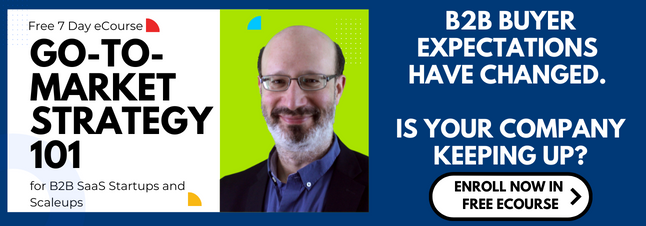Wikipedia defines user experience (UX) as “how a user interacts with and experiences a product, system or service. It includes a person's perceptions of utility, ease of use, and efficiency.”
So with that working definition in mind, how does your company’s website user experience support your goals around growth?
Do your prospects and clients positively perceive your website's utility, ease of use, and efficiency?
The Job to Be Done By Your Website
In a digitally-centric world, your website is almost always the first place someone goes to learn about your company’s products and services -- and the people on your team.
When first-time visitors arrive at your website, these prospects typically have a job they’re trying to do. That job could be a goal they’re trying to achieve or a problem they’re trying to solve.
But in most cases, there is a job to be done.
As a transformational business framework developed by the late Clayton Christensen of Harvard Business School, Jobs Theory is the idea that people have a “job” that they need to get done, and they “hire” what they perceive to be the best-fitting product or service to do that job for them.
Bad Website User Experiences Scare Away Prospects
Website user experience isn’t a nice-to-have. InVision, creators of the popular prototyping, collaboration, and workflow tool, found that 88% of people won’t return to a website that provides a bad user experience.
While many companies may believe that their website provides a great user experience, the users -- your prospects and clients -- get to be the judge and jury.
User experience sums up how a person feels about interacting with your website.
As a result, your website strategy needs to focus on the user’s needs, not yours.
Delivering Value to Users That Puts Their Needs First
This mindset can be especially hard for marketing and sales professionals to grasp as they often believe that the goal of their website is to generate leads and sales opportunities.
And that’s all well and good as a secondary goal, but when push comes to shove, if you can’t reassure prospects and clients that you have their interests top of mind -- to help them with their job to be done -- there’s very little reason for prospects to become leads, sale opportunities, or clients.
Think about what you can do to create positive user experiences when strangers, leads, and customers visit your website.
Each will have different needs, and different jobs to be done. So it’s up to you to figure out what these jobs are and deliver value. That way, these clients can eventually become your brand promoters and ambassadors.
Conceptualizing Your Website User Experience with the Inbound Methodology
The HubSpot inbound methodology can be an especially concise way to explain priorities:
- During the Attract phase, your user experience needs to attract visitors to your website and transform strangers into prospects.
- During the Engage phase, your user experience needs to engage prospects with helpful content and design elements that transform prospects into customers.
- During the Delight phase, your user experience needs to delight customers with more personal touches and a world-class user experience that transforms customers into promoters.
And with strong, positive rotational energy in the flywheel, your promoters will spread positive word of mouth that fuels growth by attracting new strangers.
Helping Users Achieve Their Goals
Approached with the right mindset, your website should be your company’s number one salesperson and most valuable digital asset.
But you have a very narrow window of time to make a great first impression on new website visitors and even returning website visitors and customers.
And people do very much judge a book by its cover. For example, Stanford Web Credibility Research, part of Stanford University’s Persuasive Technology Lab), found that 75% of the credibility that users assign to a company originates from the company’s website design and overall user experience.
Your users have a job to be done. And they need you to develop and fine-tune your website user experience superpowers to help them accomplish their goals and solve their challenges.
What have you done to improve your company’s website user experience? Let me know in the comments.
And if you need to level up on website user experience to grow better and faster, be sure to enroll now in our free 7-day eCourse: Go-to-Market Strategy 101 for B2B SaaS Startups and Scaleups.


